 |
|
DSCOVR (Falcon 9) 11 February 2015 |
Space Launch Complex 40 Cape Canaveral Air Force Station |
A SpaceX Falcon 9 rocket sends the Deep Space Climate Observatory (DSCOVR) skyward at 6:03 p.m. from Space Launch Complex 40 at Cape Canaveral Air Force Station on 11 February 2015. The mission is a joint effort between the National Oceanic and Atmospheric Administration (NOAA), the National Aeronautics and Space Administration (NASA), and the U.S. Air Force. A press release describes DSCOVR's mission: The Deep Space Climate Observatory, or DSCOVR, is a spacecraft that will orbit between Earth and the sun, observing and providing advanced warning of extreme emissions from the sun (known as Coronal Mass Ejections or CMEs) which can affect power grids, communications systems, and satellites close to Earth. From its post at the Lagrange Point 1 (or L1), approximately one million miles from Earth, DSCOVR will also observe our planet and provide measurements of the radiation reflected and emitted by Earth and images of the sunlit side of Earth for science applications. |
|
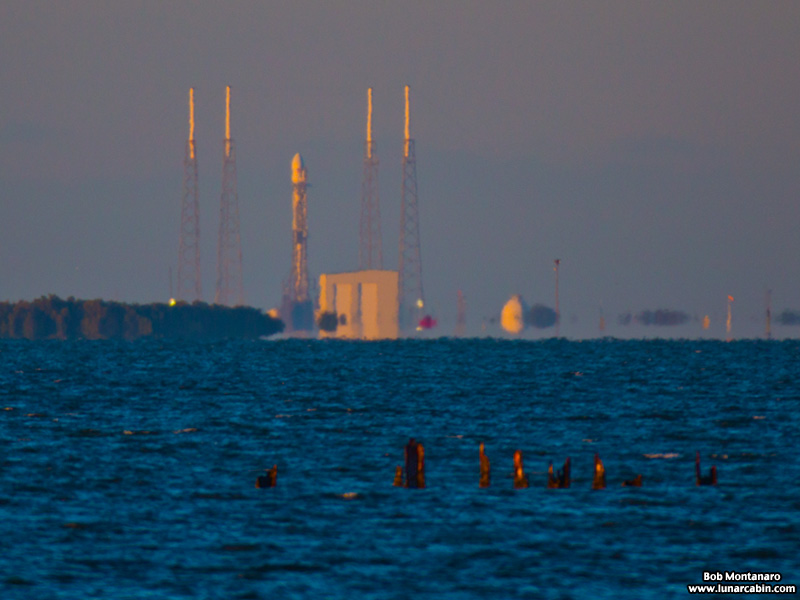 |
|
| Launch was at sunset, which bathed the rocket in a golden glow. | |
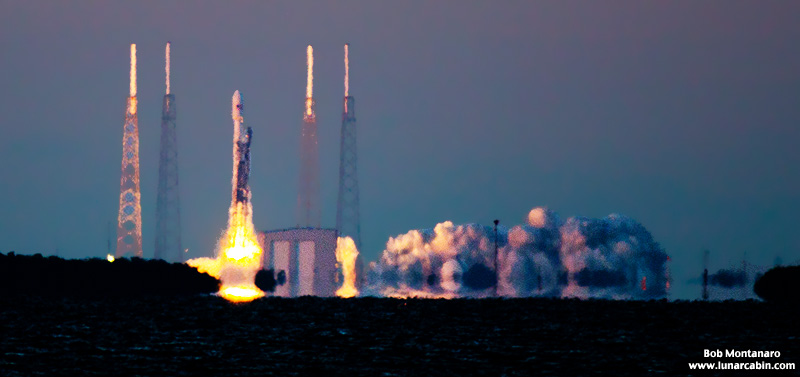 |
|
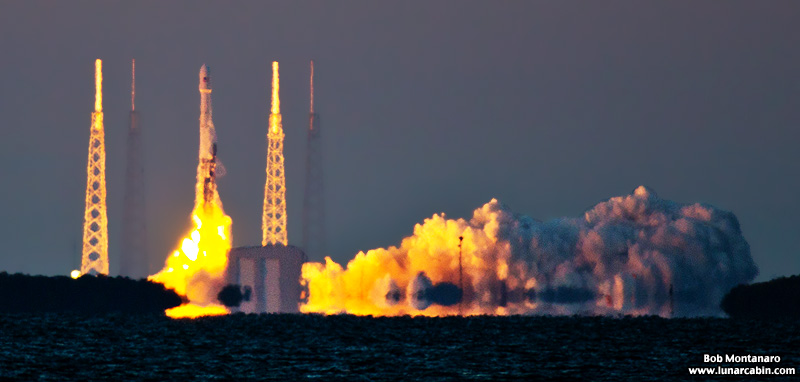 |
|
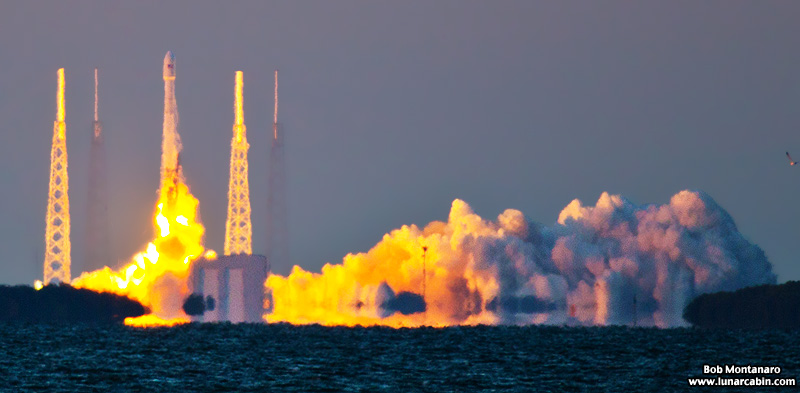 |
|
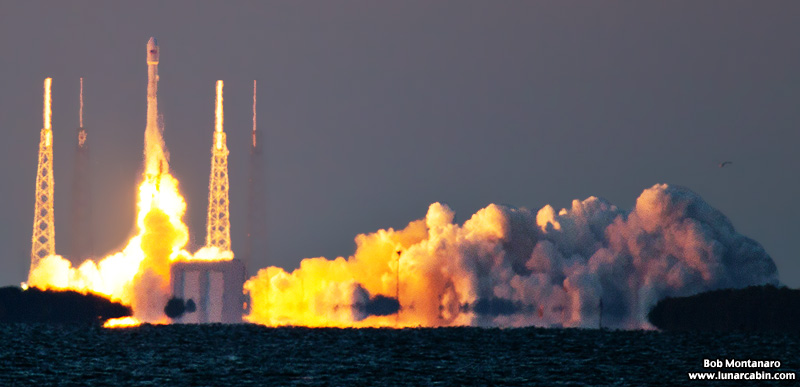 |
|
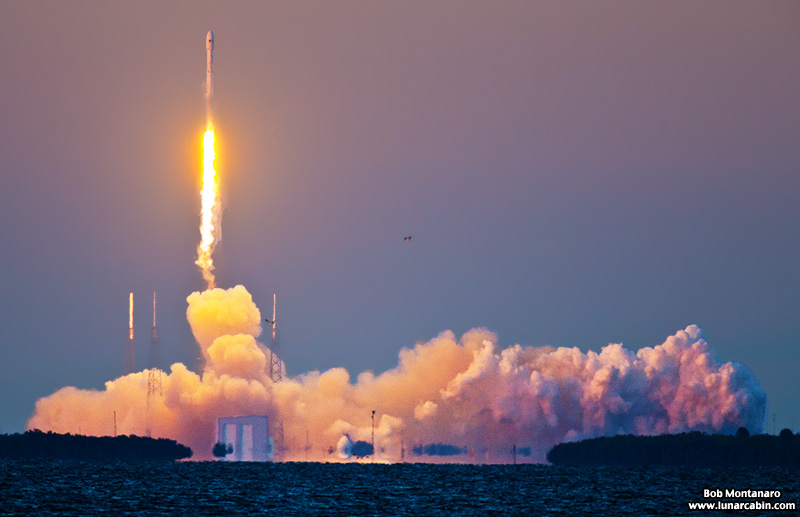 |
|
 |
|
| The landing legs on the Falcon 9's first stage can be seen at the bottom of the rocket that would have been used in an attempt to land the first stage on a ship-borne platform at sea but weather conditions were too rough to allow it so the stage made a controlled landing in the ocean instead whereupon the booster was lost. | |
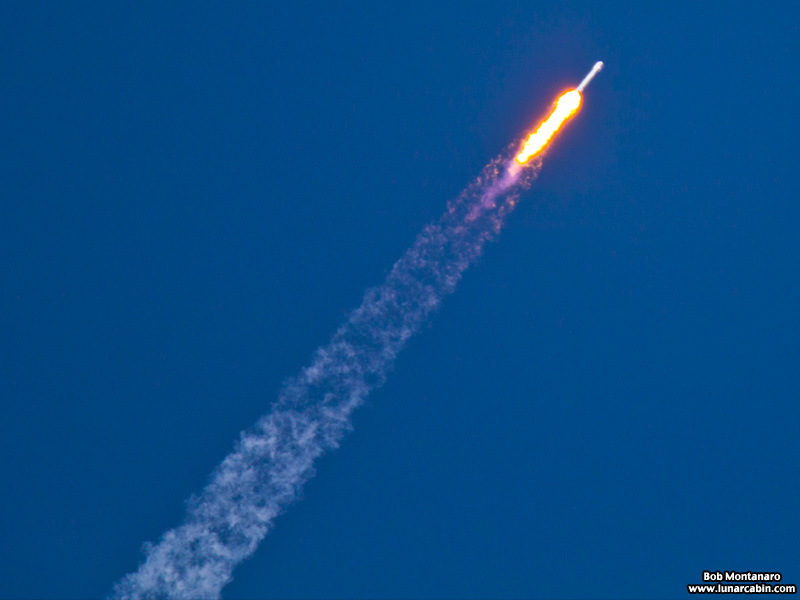 |
|
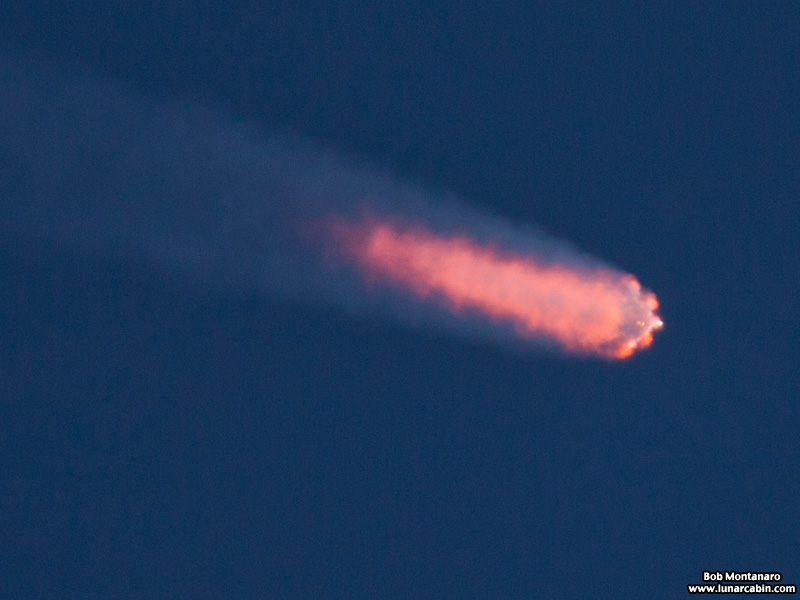 |
|
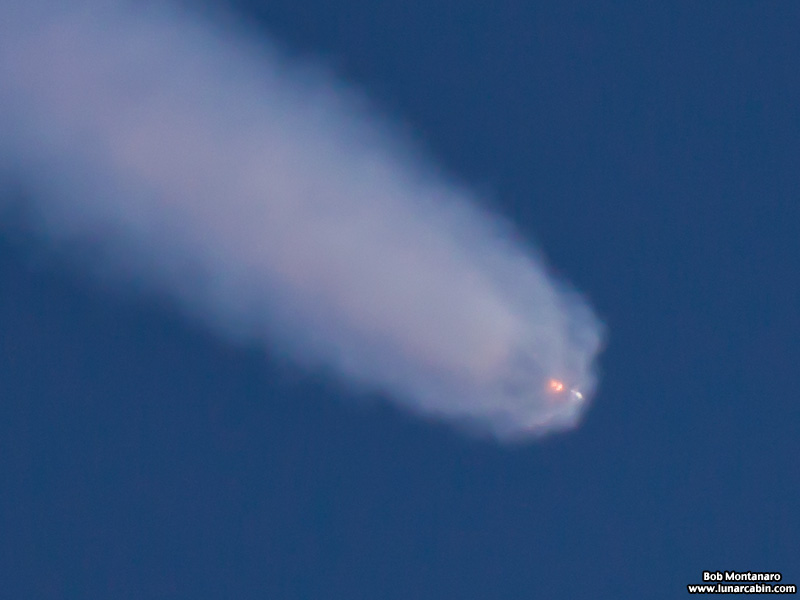 |
|
| The first stage engines shut down prior to stage separation. | |
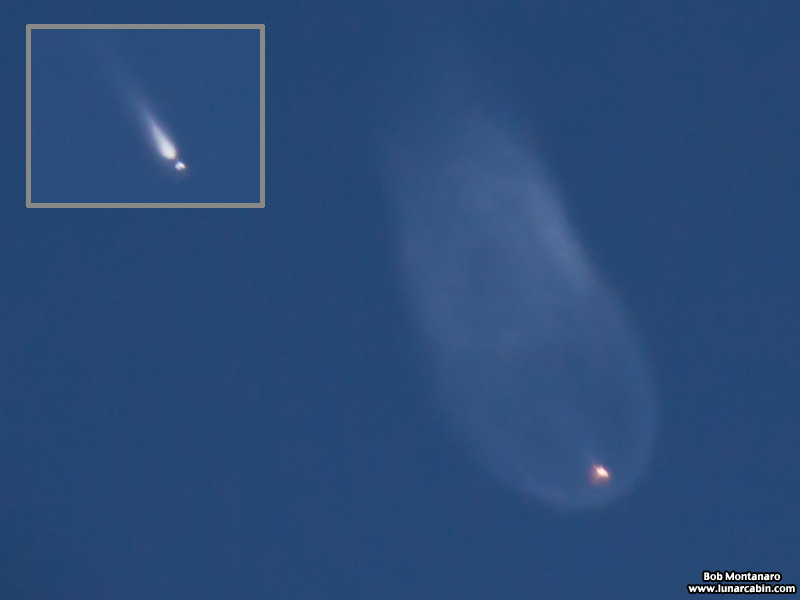 |
|
| The inset shows the first stage separating from the second stage as it coasts away. The larger image shows second stage ignition. | |
 |
|
| The second stage, at lower right, rockets away from the first stage. | |
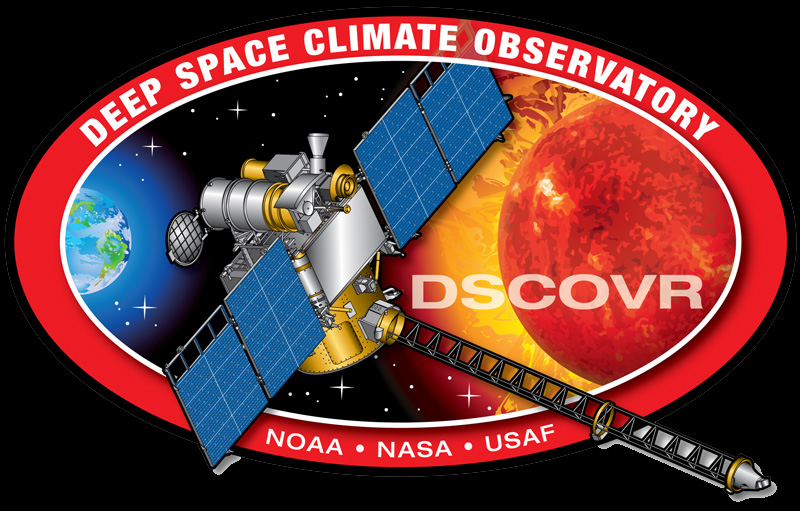 |
|
| The DSCOVR mission logo. | |
All contents copyright Lunar Cabin |
|